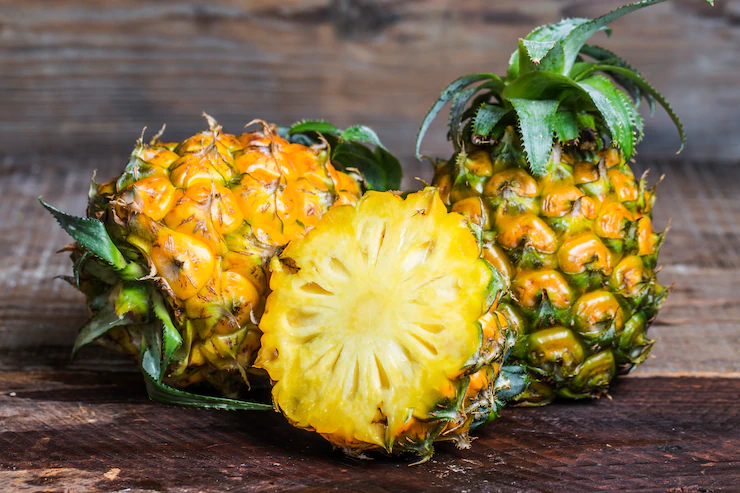When growing pineapples in South Africa, there are several infections and diseases that you should watch out for to ensure the health and productivity of your crop. Here are some common ones:
- Fusarium Wilt (Fusarium oxysporum): This fungal disease affects the roots and stem of pineapple plants, leading to wilting, yellowing of leaves, and stunted growth. Infected plants may eventually die. It is important to use disease-free planting material and maintain good soil drainage to prevent this disease.
- Pineapple Mealybug (Dysmicoccus brevipes): Mealybugs are common pests that feed on pineapple plants, sucking sap and causing stunted growth, yellowing, and deformation of leaves. They also secrete honeydew, promoting the growth of sooty mold. Regular scouting and appropriate insecticide treatments can help manage mealybug infestations.
- Black Rot (Thielaviopsis paradoxa): This fungal disease affects pineapple fruits, causing them to rot and become discolored. It is commonly spread through contaminated planting material or through wounds on fruits. Proper sanitation practices, such as disinfecting tools and removing infected fruits, can help control black rot.
- Pineapple Bacterial Wilt (Ralstonia solanacearum): This bacterial disease can cause wilting, yellowing, and death of pineapple plants. It spreads through contaminated soil, water, or infected planting material. Planting disease-free suckers and practicing crop rotation can help prevent the spread of bacterial wilt.
- Leaf Spot (Dactylaria spp. and other fungal pathogens): Various fungal pathogens can cause leaf spot diseases in pineapples, resulting in small necrotic lesions on leaves. To manage leaf spot, avoid overhead irrigation, maintain good airflow between plants, and remove and destroy infected leaves.
- Root Rot (Phytophthora spp. and Pythium spp.): These soilborne pathogens can infect pineapple plants, causing root rot and stunted growth. Proper drainage, avoiding waterlogged conditions, and using disease-resistant varieties can help prevent root rot.
It is important to note that these are just a few examples, and there might be other diseases and pests specific to your region. If you encounter any issues, it is advisable to consult with local agricultural extension services or pineapple farming experts for guidance on proper identification and management practices.
Join 'Farmers Mag' WhatsApp Channel
Get the latest Farming news and tips delivered straight to your WhatsApp
CLICK HERE TO JOIN






